Peter Zumthor drafts up a verdant sanctuary for the 2011 Serpentine Pavilion
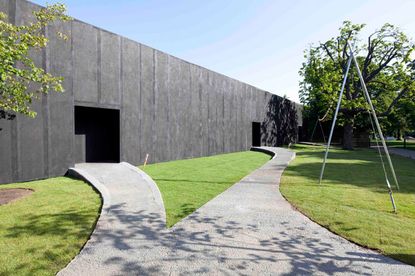
This year's Serpentine Gallery Pavilion is not the visually bold statement of Jean Nouvel's bright red composition for 2010, or the playful engineering feat that was the Rem Koolhaas and Cecil Balmond version in 2006, featuring a moving helium balloon that reacted to the weather conditions. Yet, Peter Zumthor's proposal, Hortus Conclusus (meaning 'enclosed garden'), makes its mark within Serpentine Gallery Pavilion history for the simple reason that while all preceeding offerings have been a celebration of architecture, this one moves the focus to nature. Stemming from the Swiss architect's research into intimate spaces, as well as the architectural definition of a 'sanctuary', the Pavilion this year is a soulful space to relax and contemplate.
On entering the simple, black and low orthogonal volume, through slits cut into its otherwise blind facades, the visitor is led via a dark corridor through to a planted open courtyard. Long known for designs that sit in harmony within nature, like the Bruder Klaus Chapel in Mechernich, Germany or the Therme Vals in Switzerland, now Zumthor brings nature within his design, creating a calm, minimal structure that highlights the internal enclosed garden, lined by sheltered benches.
Located, as always outside the gallery, in the green plains of Hyde Park, the pavilion is essentially a garden within a garden. And while it does not have the visual thrill of its predecessors, it is an intriguing space, introducing a further level of seclusion and mystery into the serene park scenery.
The Pavilion's lavish centrepiece garden is the work of influential Dutch designer Piet Oudolf - who worked on the recently unveiled second section of New York's High Line park - while Arup has provided all the engineering support and specialist technical services in order to make the pavilion a reality.
The Serpentine's program famously presents work by architects who haven't yet built in the UK, which Peter Zumthor indeed hasn't – for now. The Secular Retreat house he is designing for holiday rental enterprise Living Architecture is well underway and planned to be available at the end of 2012. Till then, his Hortus Conclusus at the Serpentine is your best chance to sample Zumthor's unique architectural approach in Britain.
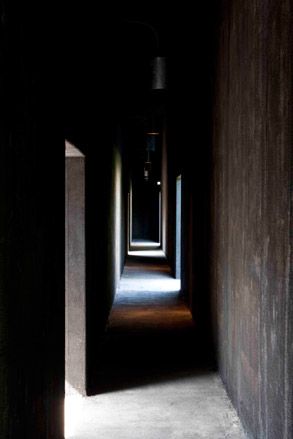
On entering the simple, black and low orthogonal volume, through slits cut into its otherwise blind facades, the visitor is led via a dark corridor through to a planted open courtyard
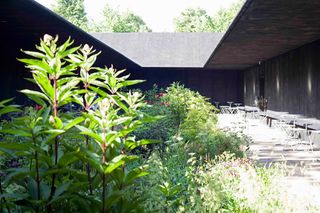
Stemming from the Swiss architect's research into intimate spaces, as well as the architectural definition of 'sanctuary', the pavilion this year is a space to relax and contemplate
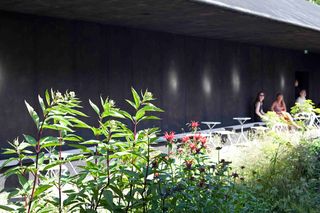
Located, as always outside the gallery, in the green plains of Hyde Park, the pavilion is essentially a garden within a garden
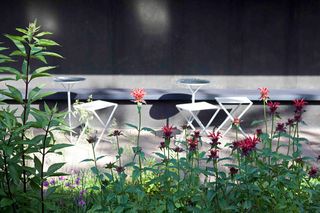
The calm, minimal structure highlights the enclosed planting, lined by sheltered benches for visitors
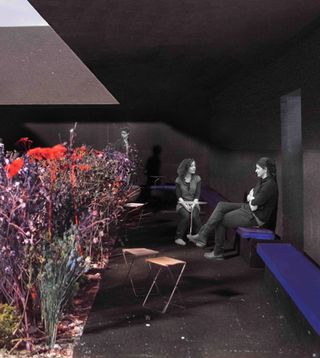
The Pavilion's lavish centrepiece garden is the work of influential Dutch designer Piet Oudolf, while Arup has provided all the engineering support and specialist technical services in order to make the pavilion a reality
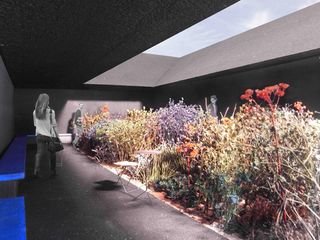
The finished structure will be open to the public from 1 July until 16 October
Wallpaper* Newsletter
Receive our daily digest of inspiration, escapism and design stories from around the world direct to your inbox
Ellie Stathaki is the Architecture & Environment Director at Wallpaper*. She trained as an architect at the Aristotle University of Thessaloniki in Greece and studied architectural history at the Bartlett in London. Now an established journalist, she has been a member of the Wallpaper* team since 2006, visiting buildings across the globe and interviewing leading architects such as Tadao Ando and Rem Koolhaas. Ellie has also taken part in judging panels, moderated events, curated shows and contributed in books, such as The Contemporary House (Thames & Hudson, 2018), Glenn Sestig Architecture Diary (2020) and House London (2022).
-
 Dial into the Boring Phone and more smartphone alternatives
Dial into the Boring Phone and more smartphone alternativesFrom the deliberately dull new Boring Phone to Honor’s latest hook-up with Porsche, a host of new devices that do the phone thing slightly differently
By Jonathan Bell Published
-
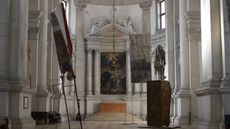 Berlinde De Bruyckere’s angels without faces touch down in Venice church
Berlinde De Bruyckere’s angels without faces touch down in Venice churchBelgian artist Berlinde De Bruyckere’s recent archangel sculptures occupy the 16th-century white marble Abbazia di San Giorgio Maggiore for the Venice Biennale 2024
By Osman Can Yerebakan Published
-
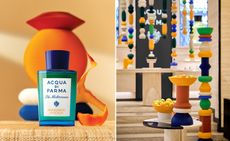 Discover Acqua di Parma’s new Mandarino di Sicilia fragrance at Milan Design Week 2024
Discover Acqua di Parma’s new Mandarino di Sicilia fragrance at Milan Design Week 2024Acqua di Parma and Fornice Objects bring the splendour of Sicilian mandarin fields to Milan to celebrate new fragrance Mandarino di Sicilia
By Simon Mills Published
-
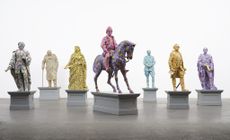 Yinka Shonibare considers the tangled relationship between Africa and Europe at Serpentine South
Yinka Shonibare considers the tangled relationship between Africa and Europe at Serpentine SouthYinka Shonibare‘s ‘Suspended States’ at Serpentine South, London, considers history, refuge and humanitarian support (until 1 September 2024)
By Tianna Williams Published
-
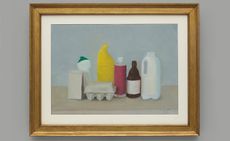 Gavin Turk subverts still-life painting and says: ‘We are what we throw away’
Gavin Turk subverts still-life painting and says: ‘We are what we throw away’Gavin Turk considers wasteful consumer culture in ‘The Conspiracy of Blindness’ at Ben Brown Fine Arts, London
By Rowland Bagnall Published
-
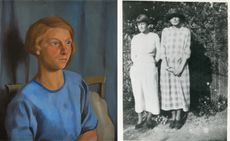 Dorothy Hepworth and Patricia Preece: Bloomsbury’s untold story
Dorothy Hepworth and Patricia Preece: Bloomsbury’s untold story‘Dorothy Hepworth and Patricia Preece: An Untold Story’ is a new exhibition at Charleston in Lewes, UK, that charts the duo's creative legacy
By Katie Tobin Published
-
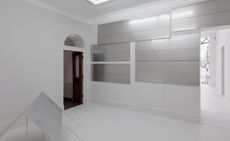 Don’t miss: Thea Djordjadze’s site-specific sculptures in London
Don’t miss: Thea Djordjadze’s site-specific sculptures in LondonThea Djordjadze’s ‘framing yours making mine’ at Sprüth Magers, London, is an exercise in restraint
By Hannah Silver Published
-
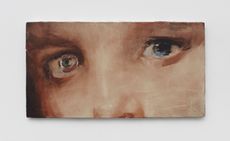 ‘Accordion Fields’ at Lisson Gallery unites painters inspired by London
‘Accordion Fields’ at Lisson Gallery unites painters inspired by London‘Accordian Fields’ at Lisson Gallery is a group show looking at painting linked to London
By Amah-Rose Abrams Published
-
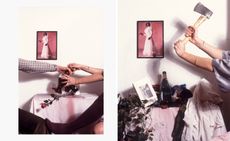 Fetishism, violence and desire: Alexis Hunter in London
Fetishism, violence and desire: Alexis Hunter in London‘Alexis Hunter: 10 Seconds’ at London's Richard Saltoun Gallery focuses on the artist’s work from the 1970s, disrupting sexual stereotypes
By Hannah Silver Published
-
 Wayne McGregor’s new work merges genetic code, AI and choreography
Wayne McGregor’s new work merges genetic code, AI and choreographyCompany Wayne McGregor has collaborated with Google Arts & Culture Lab on a series of works, ‘Autobiography (v95 and v96)’, at Sadler’s Wells (12 – 13 March 2024)
By Rachael Moloney Published
-
 Danielle Brathwaite-Shirley confronts gaming, VR and rebirth at Studio Voltaire
Danielle Brathwaite-Shirley confronts gaming, VR and rebirth at Studio VoltaireDanielle Brathwaite-Shirley has opened her first institutional solo exhibition, ‘THE REBIRTHING ROOM’, at Studio Voltaire, London
By Hannah Silver Published